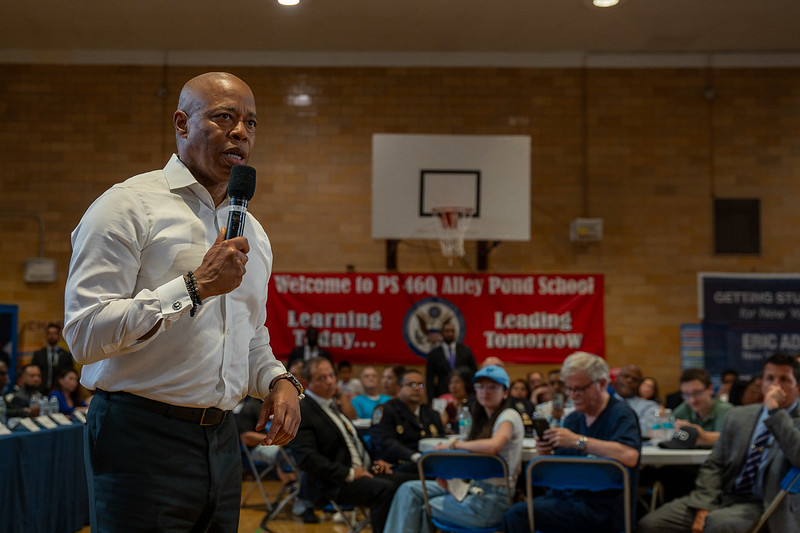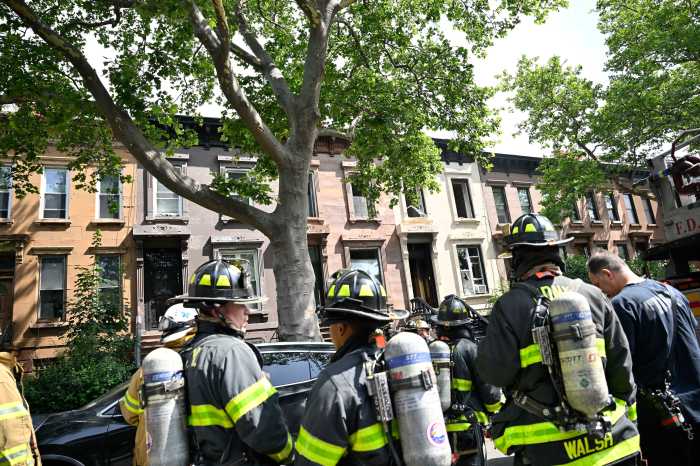BY Alison Bowen
Michelle Ibero and her husband moved downtown to start a family.
Pregnant with their first child and living uptown, Ibero chose Water Street so they could have more room for their new family.
Now, after nine months in the three-bedroom apartment, she’s thinking about moving to Tribeca or Battery Park City to be closer to stores, but said she’s sold on downtown.
“It’s very family oriented, and it’s also very close to great restaurants,” she said, walking Tuesday in Battery Park with her 6-month-old daughter.
Ibero is one of thousands of residents who contributed to a 14 percent increase in Lower Manhattan’s population in the last three years, according to a recent survey.
The survey, released May 18 by the Alliance for Downtown New York, reports that Lower Manhattan is one of the city’s fastest-growing neighborhoods. The Alliance estimated that 55,000 people live south of Chambers Street, compared to 44,000 in 2007.
“I think it confirmed what we all know, that Lower Manhattan is a vibrant, dynamic, maturing neighborhood,” said Elizabeth Berger, president of the Alliance.
Pat Moore, Chair of the Quality of Life committee for Community Board 1, has lived in the same apartment 100 feet from the World Trade Center for 33 years.
“Not only did we live in Lower Manhattan, we stayed in Lower Manhattan,” she said. Her home was destroyed on September 11, but she stayed through its rebuilding, and earned her place in a neighborhood where rising rents pushed out the corner stores she frequented.
Moore, an artist, found her home when it was a vacant building offering studio space. “We moved in when the area was not desirable,” she said.
Now, she said, young people are moving into the neighborhood, they say they live in Tribeca and consider the area near the World Trade Center a chic place to live.
“It makes me crazy,” she said. “You don’t live in Tribeca.”
During the decades that she’s lived downtown, many of the small business disappeared, including the art stores where she used to buy supplies. The owners couldn’t afford the rising rents, she said.
But Moore maintains the feeling of community within her apartment building, where all but 6 of its 24 units house the original residents.
“We are a village within the four walls of our building,” she said.
Since 2007, more than 6,000 apartments and condos have been added to the neighborhood. Residents show a trend toward buying instead of renting – 47 percent of people own their homes, compared to 40 percent in 2007 – and 88 percent said they planned to live in the area for at least three years.
Many, like Ibero, are parents with children or people hoping to start a family.
“We see the progression,” Berger said. “People move down here as singles, they rent, they have roommates. Then they get their own apartment, then they buy, they have children, they stay.”
The top reasons for putting down roots were quality of life – which Berger said is the sense of community, knowing neighbors and business owners – along with access to subways and safety.
As CB 1’s Quality of Life Committee Chair, Moore hears continual complaints from neighbors. Topping the list is noise, as more and more buildings are erected in the neighborhood.
“The biggest complaint that you will hear in the entire city of New York is noise, whether it’s Con Ed or whether it’s traffic,” she said. “Mainly down here, it’s construction.”
Another complaint is dangerous crosswalks, reported by people nervous about darting across the street.
“We don’t get the kind of complaints you get in other areas, like graffiti,” she said.
Raquel, a Financial District resident who said she was in between last names after recently getting married, likes her quiet block. Walking her two dogs nearby, she said she prefers the neighborhood at night.
“I like it when the suits go home,” she said.
The survey identified four types of people most likely to live downtown: a single woman in her 40s working in finance; a childless couple: a family with at least one child; and an older retired resident.
Most residents work in the finance, insurance or real estate industries, followed by business and advertising, with an average household income of $188,000.






























